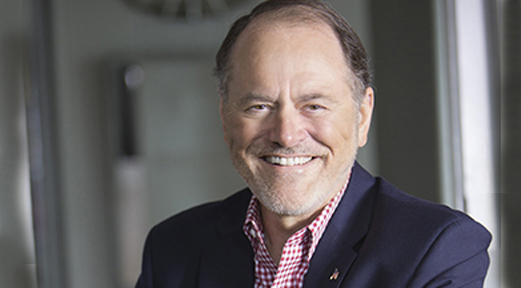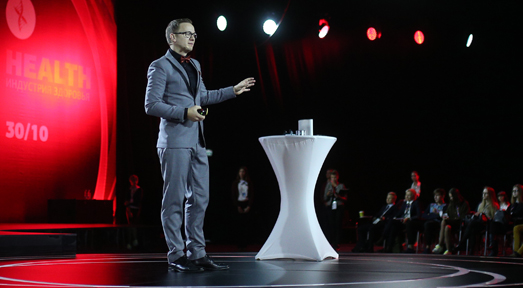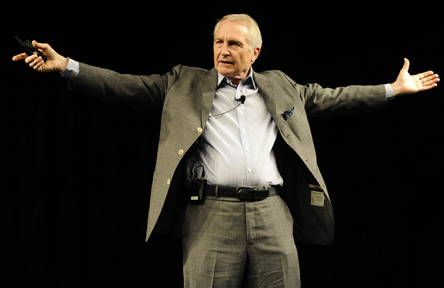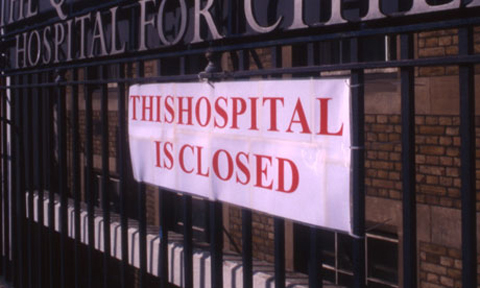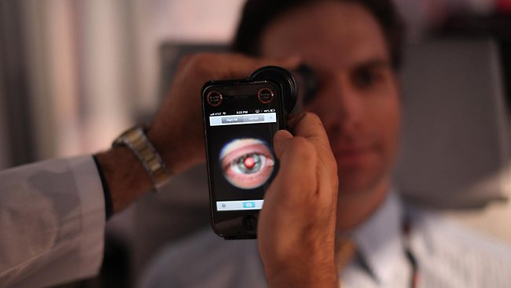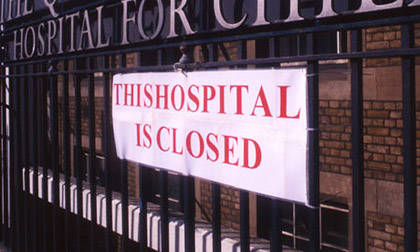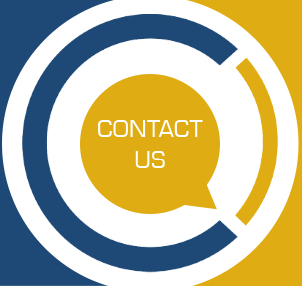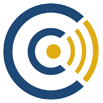
Fostering Equal Access to Healthcare with Dr. Sampson Davis
| Let’s make education popular. Let’s “glorify and glamorize” it. Education is the new cool! After all, students have a better chance of becoming an engineer, architect, lawyer, or doctor than becoming the next LeBron James or singing sensation, Beyoncé. | |
| |
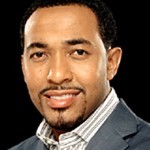 | What are some of the main challenges and opportunities faced in healthcare today? |
 | There are a variety of healthcare challenges facing communities today. One of the most prevalent is equal access to healthcare. Many living in inner-cities, rural regions and poor suburban communities find it difficult to locate a primary care physician and specialists such as a gynecologist, cardiologist and gastroenterologist. As a result, many patients use the emergency department for primary care needs and overall healthcare.
Another major concern is the growing cost of healthcare. The Affordable Care Act (ACA) has helped somewhat, but doctors are opting out of this insurance due to the low reimbursement rate available to physicians for the medical care provided. For patients who locate a doctor that will see them under the ACA, they often find themselves waiting weeks to months before securing an appointment. This long wait again forces patients to use the emergency room and urgent care centers as a means to address primary care issues. Furthermore, the rising cost of medical care is forcing many employers to lean on employees to supplement their insurance and as a result, patients are foregoing timely medications and doctor visits because their budget just won’t allow for another bill. This results in many patients doctoring themselves, which rarely leads to a good outcome. In addition, the lack of understanding on how to best navigate the healthcare arena is a growing challenge. Questions include, “Which doctor should I see for my intestinal issues or my skin problems or my ongoing back pain?” Many patients find it difficult to pick the right specialist for their medical complaints. The good news is health care technology is advancing. All testing is faster and more sophisticated. The treatment options are improving and it is my hope we will soon have cures for some of the medical issues that have plagued us for centuries. Overall, medicine is a great field with heroic measures and a career path that is life-lasting. Many of these concerns along with healthcare opportunities, I discuss in my recently published book by Random House, Living and Dying in Brick City, An ER Doctor Returns Home. |
 | What are some of the main healthcare technology trends you see emerging within the next ten years? |
 | Over the past decade, technology has had the biggest affect in healthcare and will continue as new healthcare technologies advance at a rapid pace. CAT scans, MRIs, X-rays will become faster with better quality imaging. Three-dimensional imaging will emerge helping doctors treat internal issues with better medical and surgical approaches. Medical records will eventually be housed in a national database–allowing doctors in Arizona to view a patient medical record in Florida, for example. These advances will go a long way in optimizing care and cutting healthcare costs especially as it relates to repeated studies. |
| Allowing youth to become familiar with medicine will improve overall community health and increase their appetite for a medical career. | |
| |
 | What are some ways of improving healthcare for the poorest communities? |
 | The main problem again lies in access. There are not enough qualified doctors for the large community in need. A campaign to recruit more doctors is paramount. One immediate way to attract more physicians is by increasing loan forgiveness programs for all medical specialties. This initiative will help entice more doctors to challenging areas.
It is also vital to stress health campaigns and teach tools to navigate the healthcare system better, as early as grammar school. Allowing youth to become familiar with medicine will improve overall community health and increase their appetite for a medical career. With newly earned healthcare degrees, these young professionals will likely return to serve the same population from which they were born, making for a lasting win for their neighborhood. |
 | Why did you create the Three Doctors Foundation? |
 | Three Doctors Foundation () was created in April 2000 as a way to give back to the community. So many individuals helped me rise above my circumstances and escape the dangers of the streets.
Thanks to my mother, who always gave time to the community, I knew I wanted to give back and help others. In my first year of emergency medicine residency, with student loans on the books, my two best friends and I created The Three Doctors Foundation. The foundation set out to help others rise above their circumstances. Built on the premise of H.E.L.M. – Health, Education, Leadership and Mentoring, a series of programs began in our first year and has continued since its inception. Centered on healthy living and education, these programs consist of: an annual walkathon, a mentor day, a positive peer pressure challenge and a holiday health benefit event. These free programs are open to the community and have included tens of thousands of participants over the past decade plus. |
| I believe strongly that every person has an opportunity for success. | |
| |
 | What would you say to a young person who feels they have no opportunities for success? |
 | I believe strongly that every person has an opportunity for success. Granted, each situation is different and may lend to more challenges for one individual versus another however, even with obstacles, I believe we all are able to rise above and grab a firm hold of our dreams and shape that vision into reality.
Through my speeches, I am able to connect with audiences mainly because I can relate to the struggle, challenges and disappointments many individuals face. I grew up in Newark, NJ and dealt with a variety of hardships including poverty, single-parent home, violence, crime, drugs, mental illness, health ailments, inadequate educational structure, etc. I firmly believe that since I was able to rise above and pursue a future, so can anyone. In my talks, I deliver real life steps one has to take to better their circumstance and increase their odds of success. The audience embraces my story because it is authentic. Through my New York Times Best Selling books, The Pact, We Beat the Street and The Bond, I share stories and lessons that many can read and relate to. It is always a humbling moment when a person informs me that one of my books made a lasting impact in their life. |
 | In one of your speeches, you say, “You can’t see the finish line, it’s hidden…” What do you mean by that? |
 | In the pursuit of a goal, we are faced with many challenges and at times, obstacles that appear insurmountable. There are moments where you may want to quit and give up. This is a position we all face, at one time or another, in life. I have discovered that one is closest to their goal when they want to “throw in the towel.” The finish line is there, right in reach. You may not be able to see it, but trust and have faith that you are upon it. It is during this moment that one has to continue to push through doubt, fatigue and exhaustion. Know you aren’t alone in this feeling. Anyone successful has been bitten by the “I want to quit bug;” they too, have felt the urge to give up.
One thought to keep in mind is that a bad day is only one day and tomorrow starts anew, however quitting is forever and will have ongoing ramifications. Don’t quit, keep pushing as the finish line is there, hidden right at your feet, waiting for you to cross. |
 | You have said that education needs to be ‘glorified and glamorized’ and given a sense of style and fashion; how can this be done? |
 | Sports, entertainment, fashion and music are desirable arenas filled with sparks, glitter and glamour. We desire these arenas for the bright lights alone. Why not give education the same energy? Let’s make education popular. Let’s “glorify and glamorize” it. Education is the new cool! After all, students have a better chance of becoming an engineer, architect, lawyer, or doctor than becoming the next LeBron James or singing sensation, Beyoncé.
When I’m delivering a speech, I see the desire and determination in students’ eyes. They want success. They want achievement. They just have to be told it is within their reach. In high school, I made a then unpopular pact with two of my best friends to become doctors. Through tough moments, we fulfilled our pact and are practicing doctors today. Practicing medicine is one of many areas I take part in professionally. I’m also a New York Times Best Selling Author, a professional speaker, and frequent contributor on The Today Show, CNN, and Dr. Oz. I have appeared on The Oprah Winfrey Show, where she named me “the premier role model of the world.” Education was my foundation not a basketball court. And overall, it is a cool way to go. Let’s give education that same stardom because it deserves it and our children need to know it has rock star status. |
| Dedication, determination, and discipline: these 3 D’s are iron-clad and will stand up against any moment of pessimism and negative thought. | |
| |
 | What are the three D’s of success? |
 | One day in medical school when I was facing a moment of fatigue, I decided I needed a mantra; a saying that I could easily memorize, write down and place on my desk and bathroom mirror. What I came up with was the 3 D’s – dedication, determination, and discipline. These 3 D’s are iron-clad and will stand up against any moment of pessimism and negative thought.
When pursing a goal, you can’t allow distractions or doubt to enter your space. You must remain determined, dedicated, and disciplined. Never give up regardless of how daunting the task may appear. Reach for the 3 D's in time of need. =============================================== To bring Dr. Sampson Davis to your organization to motivate and inspire your audience, please contact Michael Frick at: Mike@Speaking.com. |

